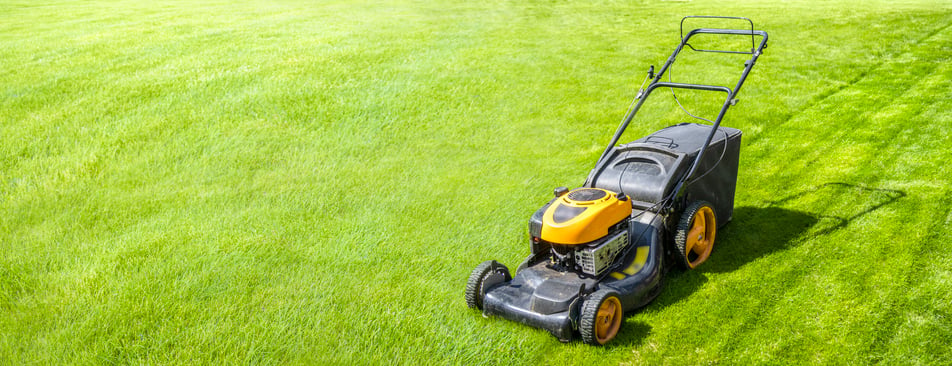How early can I mow my lawn? It’s a question we get every year. And although the snow may be melted and the temperatures warming, getting out in the yard with the lawnmower may not be the smartest thing you can do for your grass.
Yes, your lawn may have grown a little throughout the winter. This will often depend on your location. But lawns in Michigan typically need some time to ease into the spring.
So, let’s take a look at why you may want to hold off until at least April before you cut your grass for the first time in the spring.
Grass Still Dormant
The first reason you don’t want to mow your lawn in March is that it’s just not ready for it yet. If the temperature is unseasonably warm in late February or early March, your grass is not ready to mow. Why? Because it’s either still dormant or just beginning to grow.
Grass blades generate energy from the sun. But if you start cutting the grass back, just when they’re want to start growing, it forces the plant to have to put maximum energy into growing more blades quickly. This typically cuts off the energy going into the roots. You’ll essentially put your lawn into survival mode (or stress it out).
Early Mowing Can Cause Soil Compaction
Another reason you don’t want to cut your grass in March has nothing to do with your lawn itself, but rather, the soil beneath it. Your soil under the grass is still wet during March. That makes your turf soggy and walking behind your lawnmower, or even worse— riding on a riding lawn mower over wet soil— can compact it.
Compacted soil also puts stress on your grass. Any plant (or grass) without proper access to nutrients, water, and air will eventually lose color, wither and die. If you’re seeing brown spots in your lawn, or if water is ponding in your yard after rainfall, your soil may be compacted.
When To Mow Your Lawn
You can start mowing your lawn when the temperatures have warmed up enough so that your soil is warm and dried out. This will significantly decrease the risk of compaction when you’re walking on it and keep your turf from “stressing out.”
But...Mow On A High Setting
Once you’re ready to mow, it’s important that you cut your grass at the right height. You should avoid cutting your grass too low as temperatures go up.
That’s because short lawns expose the root system. This, too, can create a stressful situation for your grass. Consider doing a light mow early on in the season to take off the tips of the blades. That means cutting it back to about 2 to 2 ½ inches tall, but never cutting it lower than 2 inches. The general rule of thumb is to mow your grass when it gets to be about 3 to 4 inches tall.
Also, keep your lawn mower blade sharp to cut grass blades cleanly without ripping and shredding the individual grass blades. Grass blades not cut cleanly are more prone to water loss. So instead of mowing in March, get your lawnmower blade sharpened. This way you’ll be ready when it comes time to mow in late April or early May.
Lawn Care Done Right
So, by following this simple strategy, you’ll ease your lawn back into the growing season and will help keep it looking great. But another important part of any spring lawn care plan is fertilization. Our lawn care and weed control services will keep your grass thriving from spring through late fall.
If you’re interested in learning more about how we can help your lawn stay healthy all year long, contact us today.
